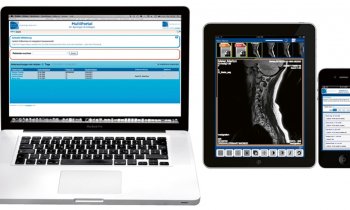Images and data integration in the healthcare information system
A report about an innovative informatics/logistics solution for the Policlinico Gemelli Hospital - Catholic University of the Sacred Heart - Rome.

The introduction of digital images to medicine took place in the 1970, thanks to ACR-NEMA studies. The DICOM standard was not born until 1993, and hospitals began to discuss integrated hospital information system (HIS) from the beginning of the 90s. This timing was governed by the necessity to develop more new powerful hard/software solutions and to consolidate international standards.
The Catholic University of the Sacred Heart Hospitals decided to follow the European Standard HISA, to achieve an open platform, capable of integrating all data relevant for the enterprise and making these accessible throughout public services, independent of the specific technical products and configuration.
The architectural principles are structured from the following perspectives: enterprise, information and computation. Such architecture has been realised with a middleware called DHE.
Clinical, administrative and directional information are stored and shared in a reliable enterprise repository.
On this platform, the basic philosophy is: ‘All information must be connected to the patient’. This is crucial because a patient has several hospital contacts (admission, day clinics, ambulatory access, etc.) and, during each contact, a patient receives clinical attention (examinations, therapies, surgical operations, etc.) and each uses resources (personnel, materials, medicines, rooms, modalities, etc.) and clinical items are produced (results, medical reports, etc). All these data are very important - first, for the patient, healthcare processes and clinical history, and second for the DRG, cost analysis and savings.
In the system, the request cycle flow always follows the same steps for each kind of examination.
In current opinion, images and connected reports are a fundamental and integral part of the corporate information asset, therefore such data also must be integrated in the common model, and connect to the relevant coded information (e.g. a patient’s image should be connected to that patient’s personal data, a scanned referral letter should connect to admission, PACS images should be connected to the requested examination, a PDF report from the lab should be connected to the examination, etc).
The Policlinico Gemelli approach is based on the extension of the scope of the PACS in the overall enterprise, by leading it to represent a sort of ‘enterprise imaging archive’, responsible for managing the storage of all multimedia data. To implement such an approach it has been necessary define an appropriate hardware solution and set-up for the archiving system, mechanisms that allow other applications to store and retrieve any type of multimedia data objects, in synchronous modality and ensuring performances suitable for embedding in interactive, online transactions.
01.03.2006










